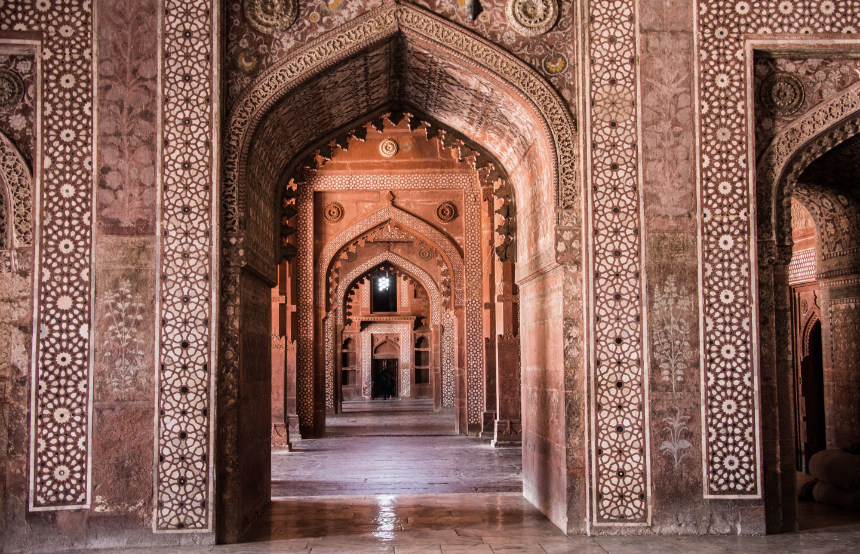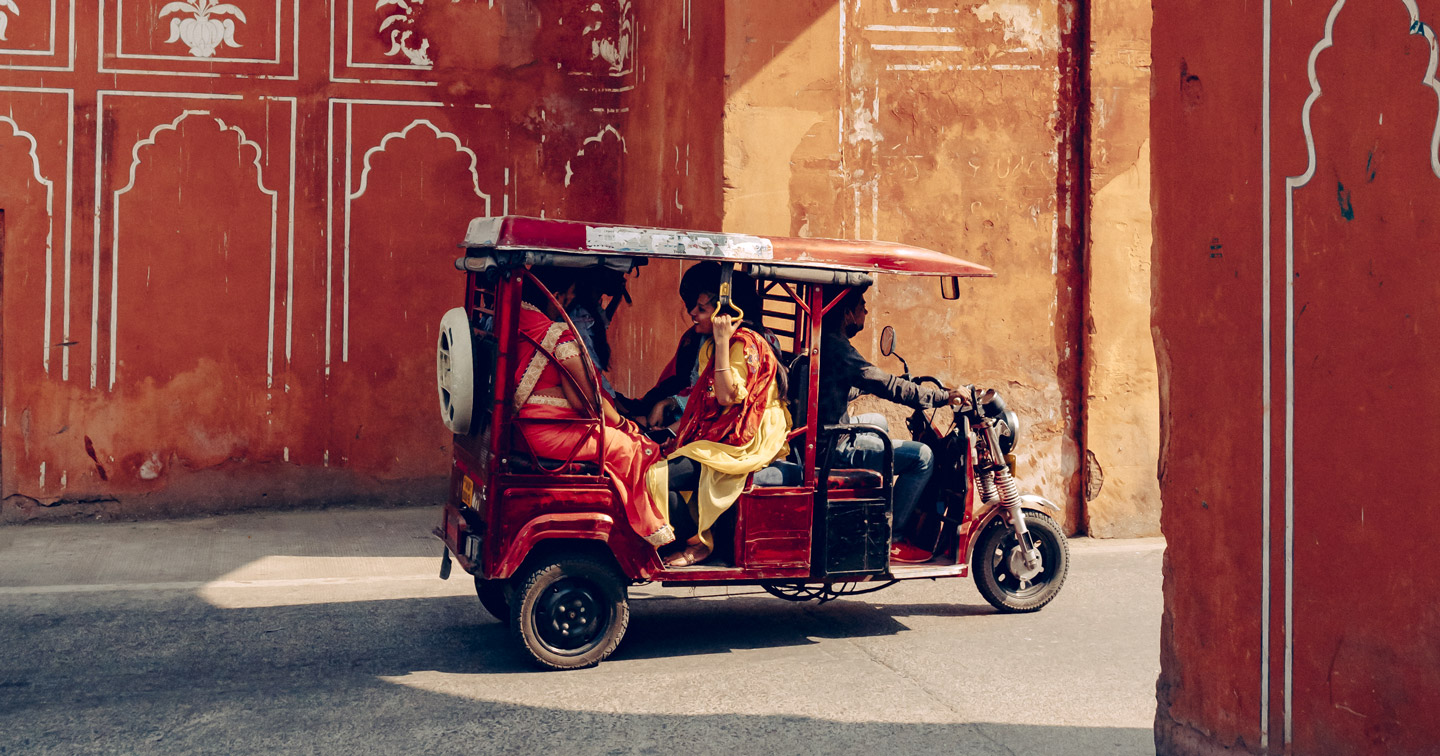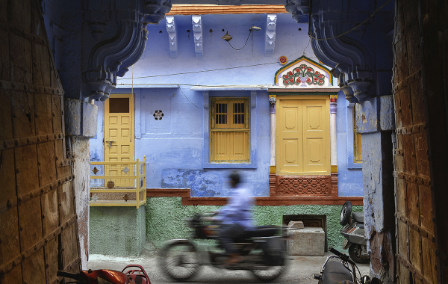
Published 16th Jan. 2023
Reading time
Architecture in India has a long history and a grand scale, just like the country itself. These characteristics lead, as you might imagine, to a huge wealth of architectural styles. Use this list of our top five unmissable architectural sites to travel through both distance and time, and experience both historic monuments and ‘futurist’ wonders. We might even inspire you to plan your next holiday to India...
Often overshadowed by the nearby UNESCO Heritage Site, the Sanchi Stupa, or confused with the similarly named Udayagiri and Khandagiri Caves in Odisha, this overlooked architectural treasure is unlikely to be crowded. Containing some of the oldest surviving Hindu and Jain temple architecture in India, this is one of the country’s most significant archaeological sites. These temples are a rare example of rock-cut architecture from the Gupta period, a time in which surviving evidence suggests a trend towards free-standing architecture in India. Nonetheless, the inscriptions in these caves date their consecration to 401 CE. These inscriptions have given historians a glimpse into the political and religious lives of people from a time when few records of this detail exist. The inscriptions might be historically significant, but nothing at this site is as visually impressive as the famous relief of Lord Vishnu as a boar-headed avatar rescuing Mother Earth from the cosmic ocean. This scene from Hindu mythology is one among many, and the caves also contain Jain iconography. The site is accessible only by walking; it makes for good exercise, but we do not recommend it for the elderly.
An oasis of green and serenity in a busy, chaotic city, the Lodi Gardens are a popular spot for picnickers, locals, and curious tourists. While they were only constructed relatively recently, in the 20th century, they were built around a group of monuments from the 15th and 16th centuries. Several of these historical tombs date back to the Sayyid and Lodi periods, of which little architecture remains, so the gardens are an important site for the study of architecture in India. The Tomb of Sikander Lodi, the second ruler of the Lodi Dynasty, is octagonal, with the characteristic Indo-Islamic onion-shaped dome, and is among the first garden tombs in India. Bara Gumbad (’Big Dome’), is a square-shaped structure speculated to be intended as the entrance to a mosque; the interior is decorated with painted stucco, carvings, and tiles, showcasing impressive geometric and floral designs. These are only two of the historical monuments located in the park, which also contain beautiful gardens, walkways, and more than 50 species of birds and butterflies.
A 16th-century city constructed to be the capital of the Mughal Empire, Fatehpur Sikri is home to meticulously designed buildings and edifices, a testament to the beauty of Indo-Islamic architecture in India. The most famous example of this architectural style is certainly the Taj Mahal, but architecture is not just about beautiful tombs; it is what surrounds and supports us through every part of our lives. Surely there is no better place to empathise with the lives of historical human beings than an entire city, with its palaces, residential areas, religious buildings, and bathhouses, all intricately constructed from red sandstone. UNESCO also recognises the importance of this city, as it has been a Heritage Site since 1986.
The buildings bordering the Oval Maidan open space in Mumbai showcase an architectural collision of such unusual significance that they were designated a UNESCO Heritage Site in 2018. During the late 19th century, the planning project that constructed the space also constructed a series of public buildings in the Victorian Neo-Gothic architectural style. Then, in the early 20th century, these were complemented by additions in the Art Deco style. The impressive opulence of the Neo-Gothic buildings had overshadowed the Art Deco buildings, which led to occasional failures to preserve these historical artefacts. It was the efforts of heritage groups concerned with this problem that led to UNESCO recognising the significance of this site. Art Deco architecture in India, as it is found in Mumbai, contains some notable additions compared to the style in the West. Decorative flourishes reference the city’s tropical fauna, as well as elements from Indian mythology. The setting influenced the architecture further, with regulations that restricted building height leading to roofs designed to mimic ancient ziggurats, and the heat resulting in protruding shelves on the exterior of buildings to create shade. The port city also took influence from ocean liners, leading to the inclusion of nautical features such as porthole windows. These details and more will be explained to you on one of the private walking tours of the district offered by the Art Deco Mumbai Trust.
In a sea of green, surrounded by nine tiled ponds, an elaborate 27-petal lotus flower blooms from the busy city of New Delhi. This flower is a house of worship of the Baha'i religion, and in line with their teachings that all religions and all people are fundamentally unified, it is intended to be a place of interfaith harmony and contemplation. The white surface of the lotus-shaped building is constructed from white marble from the Penteli mountain in Greece – the same stone used in the construction of the Parthenon. The building has won numerous architectural awards and is among the finest examples of the creative potential of architecture in India, and even in the world. Its popularity is such that it has even surpassed the Taj Mahal in annual visitors, and it has something else unfortunate in common: both are beginning to discolour as a result of India’s air pollution. The solar panels that supply the Lotus Temple with electricity are part of the attempts to deal with this ecological problem, and it is something to contemplate while confronted with a beautiful, slowly yellowing flower, a staggeringly literal metaphor for the effects of industry on nature.

Our eager experts have explored India from its mountainous north to its tropical south in search of the best destinations, experiences and properties. In-country, our passionate team of Concierges share a love of India and are always on hand to impart extensive knowledge of their country. Working with phenomenal local guides across the country, we tailor experiences to your specific interests, from family-friendly block printing in Jaipur to city food tours and off-the-beaten-track wildlife safaris. Whether you’d rather call a historic palace or a humble guesthouse home, we can offer your dream accommodation while in India.
ENQUIRE NOWPractical advice and inspiration for your next trip

Searching for the best safaris in India? We’ve got you covered. Whether you’re keen to track tigers in Madhya Pradesh, admire Asiatic lions in Gujarat or photograph forest eagle owls in Kerala, your India holiday awaits. While Bengal tigers steal the limelight in Bandhavgarh National Park, don’t forget about the shaggy sloth bears (though they’re not as cuddly as they look). Feeling up for the adventure?
15th September 2025 - India Safari & Wildlife

With their sleek, tangerine-tinged coats, piercing eyes and commanding presence, nothing beats the thrill of seeing a tiger in the wild. And where better than in India, home to the largest population on Earth? But when it comes to the best time to see tigers in India, it all depends on what you want from your trip. Whether you’d rather vivid green landscapes or crowd-free safaris, we’ve got the insider intel on when to see India’s famous big cats.
23rd June 2025 - India Safari & Wildlife

India has long been a favourite destination here at Original Travel. It's the kind of country that inspires a lifelong affinity; travellers become hooked on the kaleidoscope of colour, energy and spirituality that pulsates throughout the nation. From India’s remarkable landscapes and diverse cities to its thriving wildlife and creative cuisine, there’s always more to explore. Keen to discover more reasons to visit India?
25th May 2025 - India Travel Inspiration

Our team of destination experts will get to know you and your unique requirements for your holiday

We work with you to build an ultra-personalised holiday itinerary with your choice of accommodation, experiences and activities

All of our holidays include little extras designed to make a big difference to your trip, from fast-tracking you through airport check-in and security to our network of local Concierges